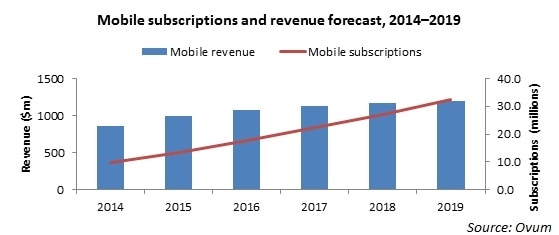Ooredoo, a leading telecommunications service provider, is about to redefine the telecommunications sector landscape in Myanmar, a 60 million population country in South Asia. At present, Myanmar's telecom sector is dominated by the state owned monopoly, the MPT. Ooredoo's entry will mark a move towards the opening up of the sector to global operators and increased participation of the private sector in driving the country's telecommunications services.
Ovum, a leading global technology research and advisory firm, stated in its latest research that mobile subscriptions in Myanmar will grow at 29.3% CAGR to 32.3 million at the end of 2019 while revenues are predicted to reach $1.2bn in 2019 from $691m in 2013. The growth will be fueled by a host of factors, which includes increased coverage, reductions in tariffs and innovation and flexibility in service plans as new private players bring with them expertise and experience from other markets they are currently operating in.
According to Ovum, Ooredoo will be start offering its services on 3G voice and mobile broadband in urban areas around Mandalay, Nay Pyi Taw and Yangon and will invest $15bn in the next 15 years to cover 30% to 40% of Myanmar’s population in 2014. Within the next 5 years, Ooredoo is expected to cover 97% of the market.
Ovum in its statement said that the mobile tariff rates are expected to come down significantly from their current rates, which are much higher compared to other markets due to restricted mobile access, stringent control on SIM cards and the prevalence of the black market for the SIM cards.
“Ooredoo will need to begin partnering with more tower companies and backhaul infrastructure providers as it tries to expand network in rural parts of Myanmar. This will require more capex, planning, and patience. Interestingly, the biggest city has just over five million people and 75% of the population lives in rural areas."
- Vivek Roy, Research Analyst in Ovum’s Asia Pacific Research Practice




















